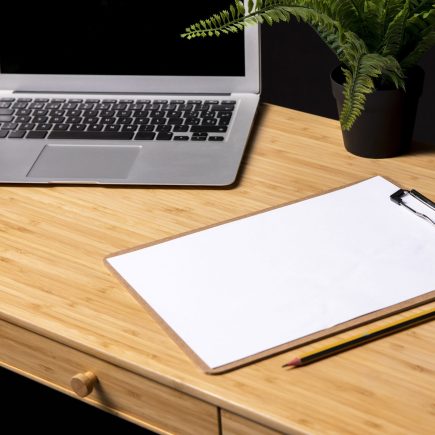Greenhouses offer an ideal environment for growing various plants by extending the growing season, protecting from pests and harsh weather, and creating controlled conditions tailored to specific plant needs. However, overcrowding in a greenhouse can lead to poor plant health due to limited airflow, increased competition for water and nutrients, and higher risk of disease.

To determine how many plants a greenhouse can support, you must consider its size, the spacing requirements of different plant types, and the layout, including walkways and vertical growing options. Efficient planning helps maximize plant yield without compromising their health.
1. Choosing the Right Greenhouse Size
Small vs. Large Greenhouses: Which is Right for You?

The size of your greenhouse determines how many plants you can grow and the type of plants you can accommodate. Small greenhouses, such as a Outsunny Outdoor Mini Greenhouses with Zipper Door, are perfect for hobby gardeners with limited space.
Small Greenhouses:. Suitable for growing herbs, small vegetables, and flowers.
Large Greenhouses: Better for commercial use or larger-scale gardening projects, allowing space for fruit trees, vines, and larger vegetable varieties.
Tip: If you’re new to greenhouse gardening, start small and gradually expand your space as you gain experience. Over time, you’ll have a better understanding of your gardening needs.
2. How Many Plants Can Fit in Your Greenhouse

Plant Spacing Requirements
Each type of plant has different spacing needs. Proper spacing is crucial to ensure that plants receive adequate sunlight, air circulation, and access to nutrients. Here’s a general guide for common greenhouse plants:
| Plant Type | Recommended Spacing (inches) | Ideal Greenhouse Size |
| Tomatoes | 24-36 | 6′ x 12′ |
| Cucumbers | 18-24 | 6′ x 12′ |
| Peppers | 12-18 | 6′ x 6′ |
| Lettuce | 6-12 | 4′ x 6′ |
| Herbs (e.g., basil, cilantro) | 6-12 | 4′ x 6′ |
Let’s calculate how many plants each ideal greenhouse size can hold based on the recommended spacing.
| Plant Type | Greenhouse Size | Plants per Greenhouse |
|---|---|---|
| Tomatoes | 6′ × 12′ | 18 |
| Cucumbers | 6′ × 12′ | 32 |
| Peppers | 6′ × 6′ | 36 |
| Lettuce | 4′ × 6′ | 96 |
| Herbs | 4′ × 6′ | 96 |
A great option for accommodating plants that need room to grow is the Outsunny Outdoor Lean-to Walk-in Garden Greenhouse. Its compact wall design and spacious interior make it perfect for vertical gardening and optimizing your available space. The greenhouse provides ample space for larger plants like tomatoes and cucumbers, while the three tiers of shelving give you extra space for smaller plants like herbs or lettuce.
3. The Dangers of Overcrowding
Why Overcrowding Is Harmful to Plants
Overcrowding your greenhouse can lead to a number of issues:
- Poor Air Circulation: Overcrowded plants block airflow, which can cause high humidity levels and make it easier for mold and mildew to form.
- Competition for Resources: Plants need sunlight, water, and nutrients. If plants are too close together, they’ll compete for these vital resources, resulting in stunted growth or weak plants.
- Reduced Light Exposure: Tall plants can block sunlight from reaching smaller plants, which hinders photosynthesis and reduces plant health.

Tip: Overcrowding can be avoided by planning ahead. Be sure to leave sufficient space between plants for their growth and health.
How to Avoid Overcrowding
To prevent overcrowding:
- Plan Your Layout: Before planting, take the time to plan the spacing for each plant type. Use a grid system to help visualize where each plant will go.
- Prune Regularly: Regular pruning helps control plant growth and ensures that plants don’t take up too much space.
- Use Vertical Gardening Techniques: Consider using trellises or hanging baskets for climbing plants to save horizontal space.
Tip: Utilizing vertical space not only prevents overcrowding but also improves airflow, which is crucial for preventing diseases.
4. Maximizing Space in Your Greenhouse
When space is limited, vertical gardening is a great solution. Growing plants like tomatoes, cucumbers, and peas upwards on trellises or plant supports can significantly increase your planting capacity.
- Vertical Gardening: Use trellises or hanging baskets to grow climbing plants and save horizontal space for smaller crops.
- Raised Beds and Modular Planters: These allow for better drainage and help organize your space, increasing planting area per square foot.
Tip: Divide your greenhouse into sections based on plant needs (e.g., vegetables, herbs, flowers) for optimal organization and growth.

For example, the Outsunny Walk-in Tomato Greenhouse is an ideal choice for optimizing your space. This lean-to greenhouse can be placed against a wall, making the best use of corner space while providing shelter for your climbing plants like tomatoes and cucumbers. Its reinforced PE cover protects plants from UV rays and retains heat, allowing you to grow even in cooler conditions.
FAQs
How Do I Choose the Right Greenhouse Size?
Select a greenhouse size based on your available space and gardening goals. Small greenhouses are perfect for personal use, while larger ones suit commercial or extensive gardening. Start small and expand as your experience grows.
What Are the Dangers of Overcrowding in a Greenhouse?
Overcrowding leads to poor air circulation, competition for sunlight, and limited nutrient availability. This can stunt plant growth and promote mold or mildew growth. Ensure adequate spacing for healthy plant development.






















